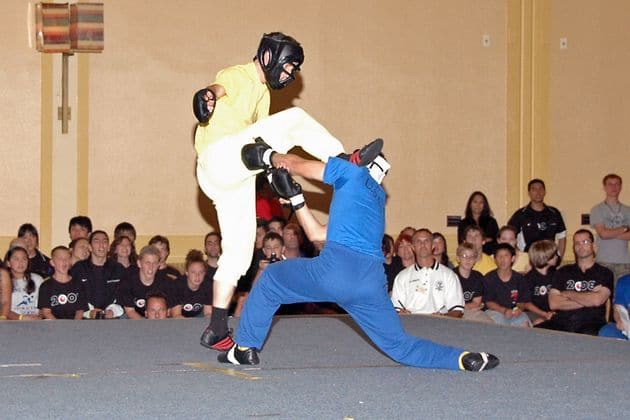Some do when it's possible. For example, in Jow Ga some of our upper cuts will look like boxing uppercuts but sometimes it won't because it's using the uppercut in a different manner. Which requires a different structure that will support the uppercut used in that manner. For example, The rear boxing upper cut is thrown with a different structure than the lead boxing uppercut. You cannot expect the same structure to work for both variations. In other words I literally cannot throw a lead uppercut with the same structure that I throw the rear upper cut.Yeah, I said that TMAs don't add new techniques to established systems the way Boxing, Judo, Bjj, MMA, etc. does.
So there is no way under the laws of physics and human anatomy that you can have the same structure for both. The big wheel punches that use the upper cut will not work with the boxer version of the uppercut because the first hand will throw you off balance if you do it that way. There is no once size fits all for an uppercut structure.
I use "antiquated techniques" and I look far from a kick boxer. Those who end up looking like kick boxers do so because they aren't trying to use the techniques that they train. They abandoned the techniques and use what feels safe.Looks like standard kickboxing with some wild punching thrown in. It's shocking that these people spend all that time learning pretty forms and antiquated techniques to just end up looking like kick boxers with crazy punching at the end. Just incredible.
Maybe they choose western boxing because that fits closely to what they currently know and how they currently punch.If Kung Fu hand techniques were on par, MMA fighters would be training and using them. The fact that they choose western boxing over traditional Kung Fu even in China is very telling.
I don't have to prove that it's better. If you are getting Knocked out by a slap then it's irrelevant if it's better than an uppercut. Because it's the slap that KOed you, not the uppercut. If you hit me in the head with your forearm and I pass out, then it's totally irrelevant what is better. It doesn't matter if professional fighters use it or not, because there I am knocked out on the ground because someone hit me in the head with a forearm.What I'm saying is that Boxing is the better method until someone from your camp proves otherwise.




